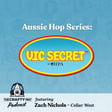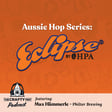
Aussie Hops Series: Topaz - Presented By HPA
“The purpose of Topaz was really a bittering hop. And then as that craft flavour grew and hit mainstream, it really evolved from simply being a start-of-boil, hot-side hop to something that was used at end of boil to something that's now used in the dry hop as well.”
In partnership with HPA, Australia's leading hop grower, we've created a series of podcast episodes – an Aussie Hop Series – looking closely at some of the country's most recognised and impactful hop varieties.
Over the course of the series, we're speaking with leading brewers from across Australia and abroad, as well as experts from HPA, discussing their experience with these iconic hops, what they've learned along the way, as well as some technical tips and tricks to maximise the impact of these hops in their beers.
In the fourth episode in the series, we chatted to Jesse James Searls, from Young Henrys, and Michael Capaldo from HPA, about Topaz. The pair discuss the variety's evolution from being predominantly a bittering hop when it was first commercialised in 1997 to one used for dry-hopping, its tropical character, biotransformation and more.
For more information on HPA and their range of hops, visit hops.com.au.
To find out more about featuring on The Crafty Pint Podcast or otherwise partnering with The Crafty Pint, contact craig@craftypint.com.



